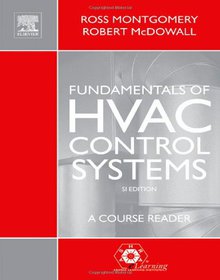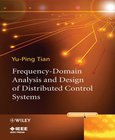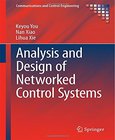Fundamentals of HVAC Control Systems
SI Edition

Book Details:
| Publisher: | Elsevier Science |
| Series: | MIX , Fundamentals |
| Author: | Ross Montgomery |
| Edition: | 1 |
| ISBN-10: | 008055234X |
| ISBN-13: | 9780080552347 |
| Pages: | 354 |
| Published: | Dec 14 2008 |
| Posted: | Nov 19 2014 |
| Language: | English |
| Book format: | |
| Book size: | 4.61 MB |
Book Description:
Heating, Ventilation and Air-Conditioning (HVAC)control systems are omnipresent in modern buildings. This book is an introduction to all those involved in the specification, design, manufacture, installation, operation or maintainance of these systems. The book explains: *Control theory and how to evaluate, select, position and sequence the appropriate type of control *The electrical knowledge needed to understand controls and the use of electrical circuit drawings *The various types of valves and dampers, and their selection, installation and operation *Terminology and attributes of sensors, the selection of moisture sensors, pressure, flow, and auxiliary devices *Self-powered and system-powered controls *Electric controls, control diagrams and control logic *The components of pneumatic systems and control applications diagrams *Wiring conventions, application-specific electronic controllers and how to use them in HVAC applications *The use of written specifications, schedules, and drawings to clearly identify what is to be installed, how it is to be installed, and how it is expected to operate *Direct Digital Controls (DDC) components, their inputs and outputs, and the programming of DDC routines *DDC Networks and Protocols *DDC Specification, Installation and Commissioning After completing this course, you will understand: *Control theory and how to evaluate, select, position and sequence the appropriate type of control *The electrical knowledge needed to understand controls and the use of electrical circuit drawings *The various types of valves and dampers, and their selection, installation and operation *Terminology and attributes of sensors, the selection of moisture sensors, pressure, flow, and auxiliary devices *Self-powered and system-powered controls Electric controls, control diagrams and control logic *The components of pneumatic systems and control applications diagrams *Wiring conventions, application-specific electronic controllers and how to use them in HVAC applications *The use of written specifications, schedules, and drawings to clearly identify what is to be installed, how it is to be installed, and how it is expected to operate *Direct Digital Controls (DDC) components, their inputs and outputs, and the programming of DDC routines *DDC Networks and Protocols *DDC Specification, Installation and Commissioning
Download Link:
Related Books:
Frequency-Domain Analysis and Design of Distributed Control Systems
This book presents a unified frequency-domain method for the analysis of distributed control systems. The following important topics are discussed by using the proposed frequency-domain method: (1) Scalable stability criteria of networks of distributed control systems; (2) Effect of heterogeneous delays on the stability of a network of distributed control system; (3) Stability of Internet congestion control algorithms; and (4) Consensus in multi-agent systems. This book is ideal for graduate students in control, networking and robotics, as well as researchers in the fields of control theory and networking who are interested in learning and applying distributed control algorithms or frequency-domain analysis methods....
Handbook of SCADA
Control Systems Security
The availability and security of many services we rely upon - including water treatment, electricity, healthcare, transportation, and financial transactions - are routinely put at risk by cyber threats. The Handbook of SCADA/Control Systems Security is a fundamental outline of security concepts, methodologies, and relevant information pertaining to the supervisory control and data acquisition (SCADA) systems and technology that quietly operate in the background of critical utility and industrial facilities worldwide. Divided into five sections, the book examines topics comprising functions within and throughout industrial control systems (ICS) environments. Topics include: Emerging trends and threat factors that plague the ICS security community ...
Analysis and Design of Networked Control Systems
This monograph focuses on characterizing the stability and performance consequences of inserting limited-capacity communication networks within a control loop. The text shows how integration of the ideas of control and estimation with those of communication and information theory can be used to provide important insights concerning several fundamental problems such as: minimum data rate for stabilization of linear systems over noisy channels; minimum network requirement for stabilization of linear systems over fading channels; and stability of Kalman filtering with intermittent observations.A fundamental link is revealed between the topological entropy of linear dynamical systems and the capacities of communication channels. The design of a logarithm...
2007 - 2021 © eBooks-IT.org



